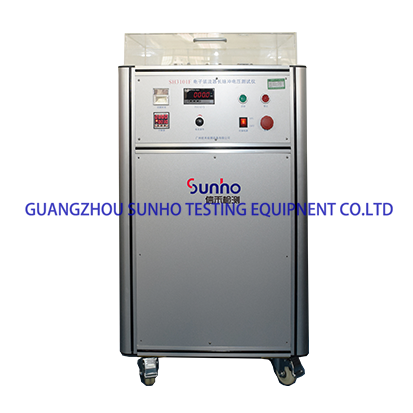Explore the Electronic Ballast Pulse Test Tour
While exploring the world of electronics, we came across a very interesting character: the electronic ballast. But how much pressure can this little hero take? This is where the pulse test for electronic ballasts comes in.
Firstly, we have the short pulse test, which is like a sudden challenge for the electronic ballast. We apply a very short but intense current pulse to the ballast, like testing the explosive power of a sprinter. This test helps us to understand how an ECG performs in a short period of time in response to a high-intensity current shock, including its response time and efficiency.
The long pulse test, on the other hand, is a completely different story. It's more of a constant battle, where we subject the ECG to a pulse of current that lasts for a longer period of time. It's like running a marathon to see how it performs under prolonged stress. The key to this test is to observe the stability and durability of the ECG over a long period of time.

So how are these tests conducted? Firstly, we prepare the experimental equipment, including electronic ballasts, pulse generators and measuring instruments. In the short-pulse test, we quickly apply a short, high-intensity pulse; in the long-pulse test, a longer, continuous pulse. Throughout the test, we record the response of the ECG and analyse the data to assess its performance.
Among them, the ECG Short Pulse Voltage Tester (SH3101E) and ECG Long Pulse Voltage Tester (SH3101F) can well perform the above tests.
Technical parameters:
1、Operating voltage: AC 220V/50Hz.
2、Load: AC220V 3A; .
3、Control coil: DC24V 50mA.
4、Vacuum components.
Maximum continuous load current: 20Amps.
Maximum working time/Maximum release time: 20us ; .
5、C capacity: 0.0083-0.59UF, withstand voltage: 120-2500V; 7.3-61.5UF, withstand voltage: 120-1200V; precision: ±5%.
6、R resistance value: 22.5 ~ 190Ω; precision: +1%
7、Pulse voltage: 120V-1200V;
8、Working Temperature/Humidity: Temperature 20±5°C;Humidity 60%.

Technical parameters:
1、The working voltage: AC 220V/50Hz ;-2, the load: AC220V/50Hz ;-3, the working temperature/humidity
2、Load: AC220V 25A.
3、Test number: 1~9999.
4、Pulse interval time: 1~99.99S can be set.
5、PSU1 pulse voltage 50~500V adjustable; MAX10A, load full load adjustment rate ≤2%.
6、PSU2 specimen power supply provided by the user, equipment to provide input interface;
7、Transient suppression resistive components: 1000, 0.1UF
8、Using high-voltage fast power devices to control the pulse output, the opening time of about 1uS, high-voltage fast bypass _ diode, recovery time of not more than
500nS.
9、Working temperature / humidity: temperature 20 +5 ° C; humidity 60%;.
Through these two tests, we can not only test the limit performance of electronic ballasts, but also have a deep understanding of how it works under different conditions. Imagine that without these tests, our electronic devices could have said goodbye to us at the first big fluctuations in current. These pulse tests are therefore essential to ensure that our electronic devices operate stably in a variety of environments.
As technology continues to advance, we look forward to more precise and efficient test methods to ensure that electronic ballasts are able to cope with the more complex and demanding current environments of the future. Through these pulse tests, we can not only ensure the safety and stability of electronic devices, but also advance the development of ECG technology. These tests are an integral part of ECG research and they help us to unravel the mysteries of the electronic world and provide us with a deeper understanding of the stability of electronic devices.
The analysis and interpretation of the test results provide us with valuable information that enables us to continuously improve the design of electronic ballasts and enhance their anti-interference capability and reliability. This constant pursuit of perfection is the real driving force for scientific and technological progress. Every successful test is a big step on this road for us.


